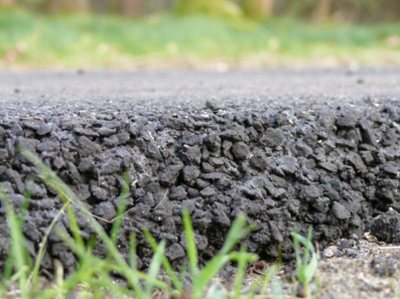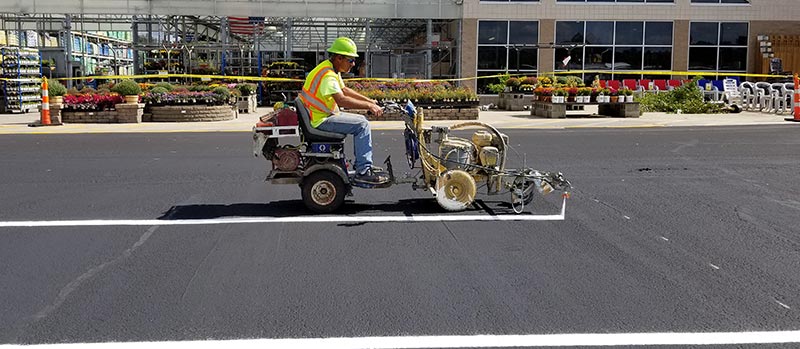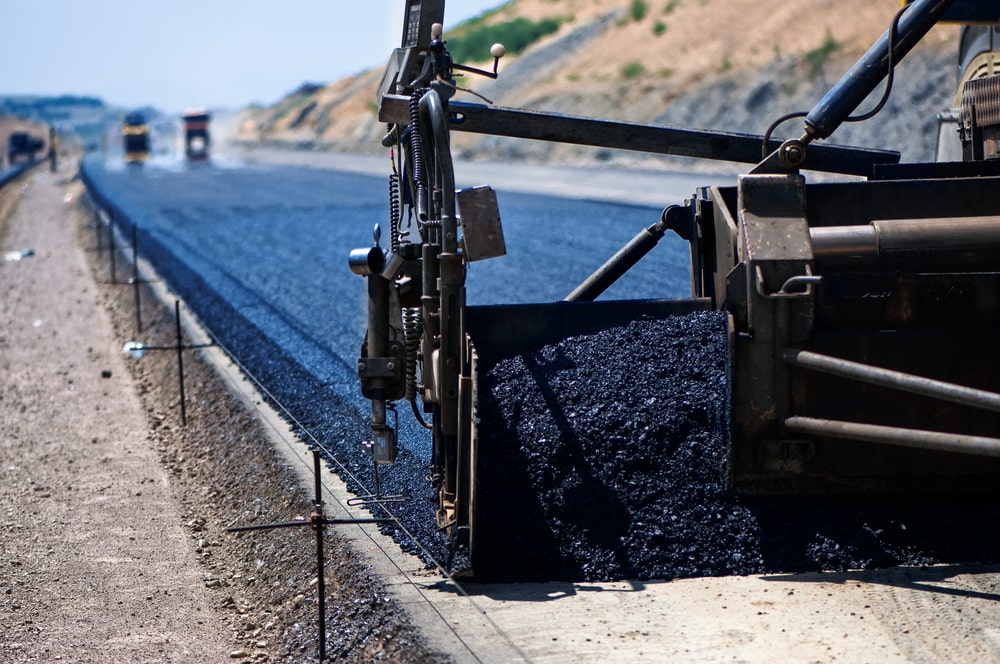Examine This Report about A1 Professional Asphalt & Sealing Llc
Examine This Report about A1 Professional Asphalt & Sealing Llc
Blog Article
The Definitive Guide to A1 Professional Asphalt & Sealing Llc
Table of ContentsNot known Facts About A1 Professional Asphalt & Sealing LlcThe Buzz on A1 Professional Asphalt & Sealing LlcThe Facts About A1 Professional Asphalt & Sealing Llc UncoveredOur A1 Professional Asphalt & Sealing Llc PDFs4 Easy Facts About A1 Professional Asphalt & Sealing Llc Shown

The oil in a vehicle engine is not just oil. It includes a selection of additives to enhance the car's efficiency. These include polymers, viscosity modifiers, heat stabilizers, additional lubes, and wear ingredients. The REOB consists of all the ingredients that were in the waste oil as well as the wear steels from the engine (mostly iron and copper).
By making lots of blends utilizing various REOB examples and various asphalt binders, the variations greatly can be averaged out. A number of States offered examples of recognized REOB composition to TFHRC researchers, that examined the examples to contrast the portion of added (recognized) REOB to the discovered (evaluated) quantity. The analyses showed an equivalent percent of included and found REOB.
The 30-Second Trick For A1 Professional Asphalt & Sealing Llc
None of those States recognized that the asphalt they were acquiring contained REOB. One State urged its samples had no REOB - https://allmyfaves.com/a1asphaltseal?tab=a1asphaltseal.
Of the 1,532 examples checked, 12 percent included REOB, and some contained considerably high levels of it at 1020 percent. The highest degree was 34 percent in an example from Texas, which TxDOT had actually utilized in a patching substance. This testing likewise revealed the existence of phosphoric acid in 11 percent of the samples, and 2 percent included ground tire rubber.
2 years earlier at TRB's annual meeting, the Federal researchers held an REOB workshop and presented the searchings for of their research laboratory analyses to a standing room-only crowd. Although some companies do not particularly ban REOB, they do enforce physical tests that preclude its useeffectively a restriction. asphalt sealcoating in st louis. Others do not prohibit it by requirements, but have agreements with asphalt vendors to prevent making use of REOB
The 4-Minute Rule for A1 Professional Asphalt & Sealing Llc
A handful do allow REOB, some within specific restrictions. Ohio and Texas limitation degrees to less than 5 percent of the asphalt. To create a dependable test technique that all States can use, the TFHRC researchers established a round-robin examination plan. The participants are 11 State freeway agencies (Illinois, Massachusetts, Minnesota, Mississippi, Montana, North Carolina, Oklahoma, South Carolina, Texas, Vermont, and Wyoming), 2 independent screening labs, the Ministry of Transportation in Ontario, Queen's University in Ontario, and an Ontario paving service provider.
The participants are evaluating the examples individually utilizing the guidelines provided by the TFHRC scientists. The result will certainly be a suggested AASHTO test method that any State can take on and utilize.
The sidewalk with REOB, which is located 0.6 mile (1 kilometer) from the pavement without REOB, has the same subgrade, traffic thickness, and climate. The segment of Highway655 with 5 to 10 percent REOB showed significant breaking. In this instance, the existence of REOB was the recognized root cause of splitting at a low temperature levels.
"In our experience in Canada, also little quantities of 23 percent can be a trouble." Likewise, an area of test sidewalk in Minnesota (MN1-4) discovered to consist of REOB likewise fractured too soon. The pavement executed well for the very first 3 to 4 years, yet after that began to split. This sidewalk is additionally based on low temperatures.
The smart Trick of A1 Professional Asphalt & Sealing Llc That Nobody is Talking About
The examinations were not considerable, but they showed that at degrees of 6 percent or more, the tensile stamina of the asphalt dropped significantly. At a degree of 3.5 percent REOB, the variant in the physical examination methods was more than the effect of REOB. It was difficult for scientists to analyze whether REOB was existing. https://hearthis.at/john-tally/set/a1-professional-asphalt-sealing-llc/.

One binder specification considered is the difference in between the reduced temperature level critical specification temperature for rigidity (S) in the flexing beam rheometer and the bending light beam rheometer creep incline (m-value) kept in mind as Tcritical. TC = TC (S) TC (m-value). Analysis of this criterion is still ongoing. Two independent research study teams, one from AASHTO and the other from the Asphalt Institute, concluded that more research is needed on making use of REOB in asphalt.
Formerly, all asphalt screening determined design buildings such as rigidity. These tests do not reveal what materials had been added to the asphalt.

A Biased View of A1 Professional Asphalt & Sealing Llc
These outcomes show there are weaknesses in the standardized design screening methods that might be manipulated. The manufacturer may have an economic benefit and the item passes all the standardized tests, but the item might not be useful to making sure long-lasting performance. To address this issue and the expansion of brand-new asphalt ingredients and extenders, TFHRC is starting a research program to use portable spectroscopic tools, x-ray fluorescence spectroscopy, and Fourier change infrared spectroscopy to enable analyses to be done in the area instead of needing to take samples back to the laboratory.
Report this page